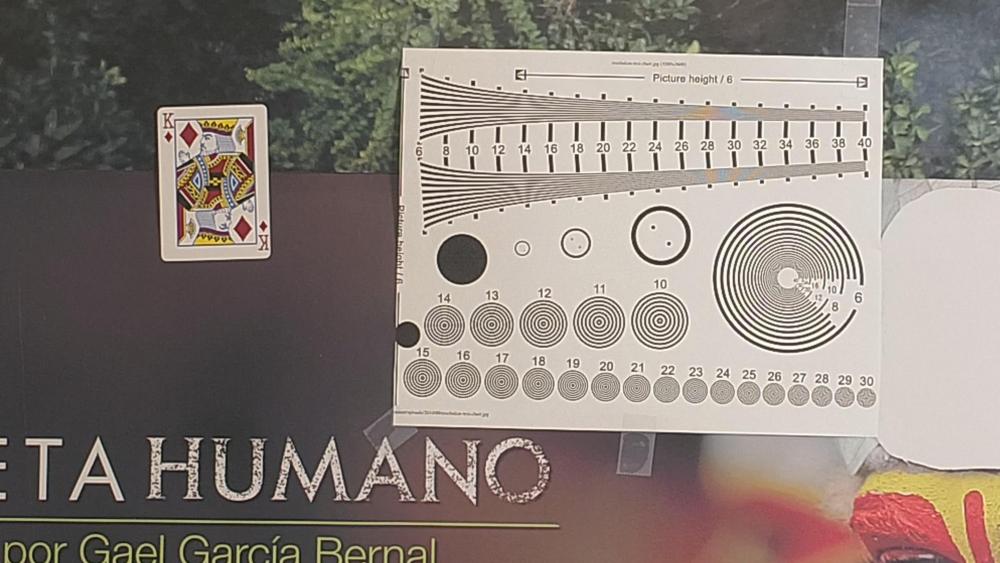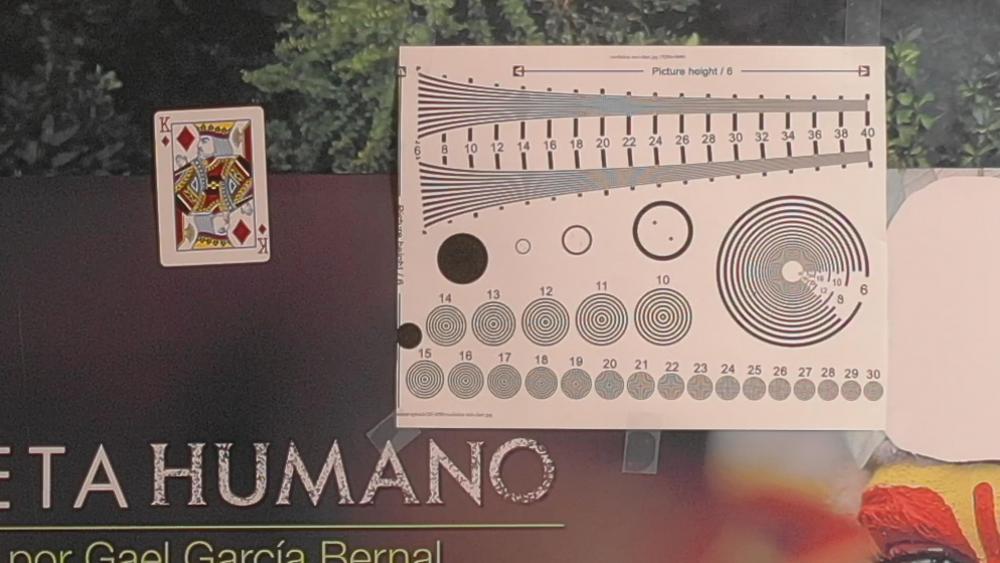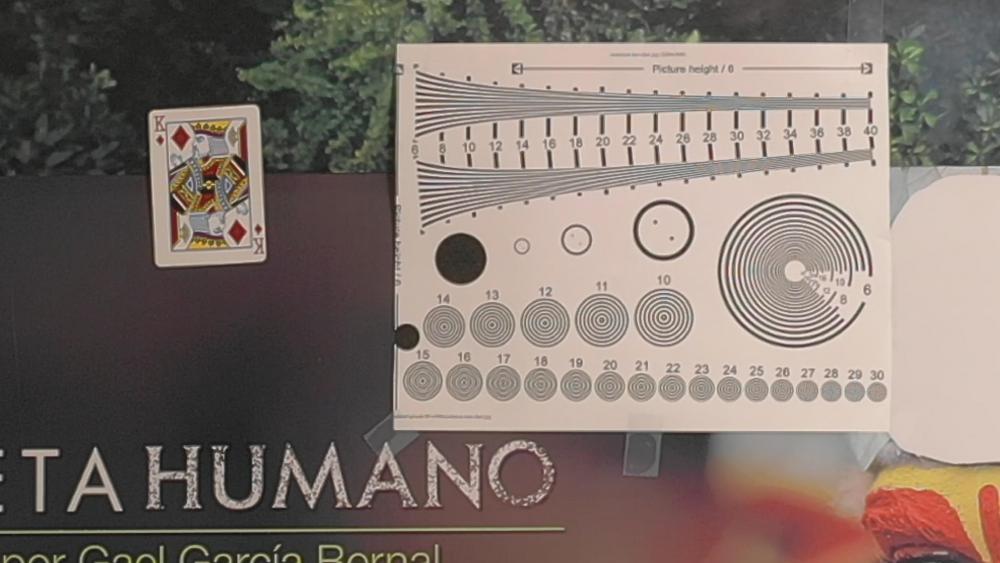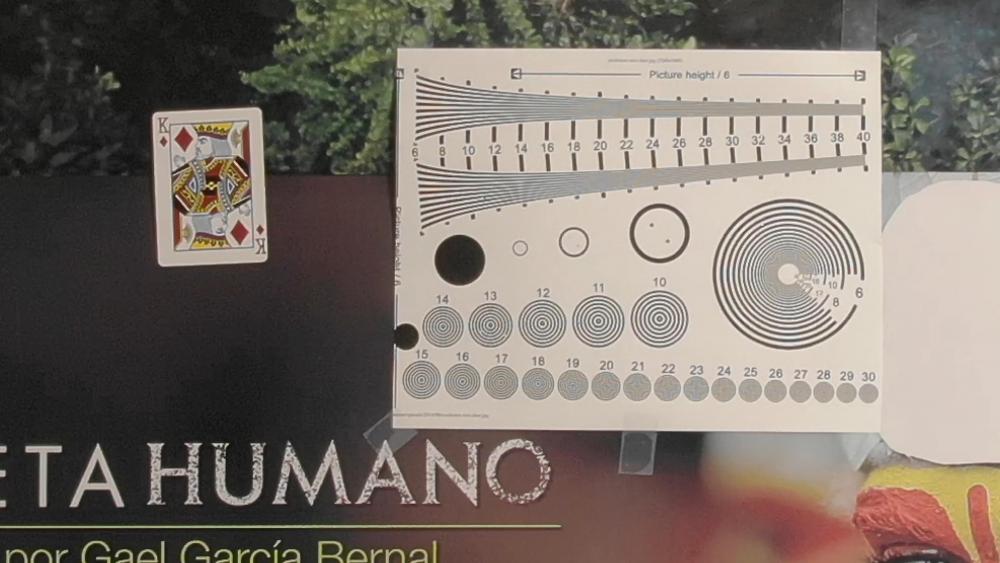
Cliff Totten
Members-
Posts
273 -
Joined
-
Last visited
Content Type
Profiles
Forums
Articles
Everything posted by Cliff Totten
-
Nikon Z6 / Z7 to go RAW with Atomos Ninja V - could Panasonic be next?
Cliff Totten replied to Andrew Reid's topic in Cameras
Would love to see Atomos develop their own raw file standard and open it for free to all NLEs. ProResRAW is great but its stuck in FinalCut only. I dont see Apple allowing their competition to have it for free. I cant see Apple going through the trouble to design ProResRAW only to give it out to everybody for no reason. -
I would bet that 10bit on any future Alpha camera is a HUGE internal debate among Alpha and XDCAM/Pro division managers. I'm betting the Alpha team is eager to give 10bit while XDCAM/Pro is screaming "no way!....10bit is OUR territory!" I'm certain that Panasonic will absolutely give their new FF cameras 10bit. This competition will greatly twist Sony's arm and probably force them to do something very uncomfortable,....make the A7S-III the first Alpha camera to have 10bit recording! Sony will do everything it can to slow the growth of Panny's new S series cameras. The last thing Sony wants is to be out-gunned ny Panasonic and give Panny a turbo-charged product rocket launch. If Sony can match Panasonic feature for feature, they can take away the "specialness" of Panny's very first full frame cameras. Sony Alpha wants to desperately steal Panasonic's thunder. Alpha managers will win the argument and be happy but XDCAM/Pro managers will grumble about it all the way! LOL! CT
-
Absutely right. All the gain in the universe doesn't turn a half-full pixel well into a full pixel well. Gain has zero affect on the amount of light (photons) that were counted. Gain also cannot improve signal to noise ratio either. A 25% full pixel well will always be noisier than a 99% full well. Yes, you can take a 25% full pixel well reading and amplify that (dim voltage) and amplify it to represent pure white, but it will never be the same as getting a pure white value from a 100% full pixel well. (And of course all the mid tone mappings that come with it) "Gain" is not "exposure" in any way shape or form.
-
Gain/amplification tricks are Wonderfull. However, if a photosite is half full of photons, all of the gain/amplification tricks in the world wont change how many photons were collected. A photosite that is half full, is still only half full even after you add +3 or +9 or even +50db. The only way to increase the signal to noise ratio is to add more and more photons and fill up that photosite. Counting two or more "fill-ups" and adding those voltages together seems to acheive that goal....acording to MIT's lab work. I believe that Sony STARVIS' quad pixel, multi exposure trick was the beginning of this idea. Its different but it does allow a cluster of 4 green (or red abd blue) pixels to have two seperate exposures to collect more photons for the shadow areas. This IS a true temporal multi exposure trick. This MIT idea is not exactly a "temporal" time trick, its using the same exposure time for all photosites, its just allowing the saturated ones to "dump and reload" before the cycle is complete for the entire sensor. Its one global sensor exposure time with the brightest areas "stacking" their voltage output together so they avoid saturation. I dont know...im only speculating. But I do know that gain and actual "light exposure" are two very very very very very different things. CT Also....I did read that MIT put a patent on this "dump, reload and stack voltages" technique. I dont know if Sony can use it or not.
-
That was me that posted that on Sony Alpha Rumors. I read that MIT is working on a sensor readout technique that virtually doesnt allow a photosite to saturate. It makes a photosite fill up, dump its value and fill up again and again until the readout cycle is complete. If you were using a 1/30 second shutter setting, you could collect and "add up" the photons in your your brightest highlight areas 2 or 3 or more times in that 1/60 shutter opening. Your dark shadow areas wont get much help because those photosites would never completely fill up but your highlights theoretically have no limit. (Execpt for the readout and processing speed of A/D conversion.) How fast can the processor handle a photosite fill, read, dump, add, fill, read, dump, add, fill, read, dump add in 1/30 or 1/60th of a second? Thats a TON of adding work for each photosite. You would probably need a specialized processing chip to take advantage of this new way of handling this kind of A/D..... Oh wait!!,...isnt that what Sony is saying? You must also buy their specially paired image processor to go with this sensor? ( otherwize it cant work with any other? ) Hmmmm....... P.s. Im sure this is a gross over simplification of what MIT and maybe Sony are doing. We will need to see how this develops to truely know. I think is clear that Sony is doing something unusual to make these phototon collection numbers so high using photosites that ore only 4+microns large. CT
-
I seriously doubt this is the A7S-III sensor. Sony will go for new generation 12mp BSI fully stacked design using this architecture. The current 12mp sensor is an older front side illuminated design with 8 micron photosites. A next generation stacked model could be 10+ microns in size? This spec sheet does give is a good look at what Sony's latest generation sensor architecture will look like. CT
-
The biggest problem that Sony Alpha has,....is Sony XDCAM. Its going to be politically hard for the Alpha folks to add 10bit, 4k, 60p, 400mbp/s internal recording with no recording limit to a new A7S-III. This is what they will probably face with a Panny S1 competition at NAB 2019. If Apha does this, XDCAM managers with scream bloody blue murder to the highest Sony executives. XDCAM does NOT want a Sony camera like this to exisr for fear that it would cannibalize far more expensive camcorder models. Actually, Im certain our favorite Panny EVA1 manager is very nervous about the idea of a fully loaded FF Panny S1 under his EVA1 either. (No, he has never actually told me this) Guys,...this huge shift we are seeing in the industry scares a lot of marketing execs and is probably making everybody scramble to try and figure out how to fight each other without stabbing themselves in the process!
-
If TechInsights can get one, they will x-ray the sensor, inspect under an electron microscope and map out the entire foundry of the chip. They will tell us exactly where it comes from. They do this all the time and these guys were the ones that busted the; "Yes, the GH5 sensor is our very own Panasonic sensor" myth! I believe they were the ones that fingered the Nikon D850 as a Sony chip too. Even though everybody said it was a TowerJazz. CT
-
Two people I know on the sensor industry who have delt with Sony SemiConductor as customers have told me that companies HATE buying from Sony. They dont like signing Sony's contracts of sale. Sony demands from customers ALL the major specs of your camera BEFORE they price and agree to sell you their sensors. In other words, they just dont sell their chips "blindly" to anybody. They want to know "what" its going into and lock all of that into the contract so you cant change it at a later date without Sony approval. Many companies dony like giving Sony their specs upfront and having that locked into a contract. But hey.....if you want access to huge Sony pattents, you gotta play ball with them. Maybe Samsung and TowerJazz can attract customers away from Sony because they have no camera manufacturing interests to compete with their customers products.
-
Panasonic would be in absolute HEAVEN if Sony backed away from an A7S-II sucessor! I suspect that the rumors about an A7S-III being fully R&D finished and waiting to go into production could now we completely turned upside down this month. I suspect that Sony said "Crap....look at our competition!...we need to go back to R&D and cripple the A7S-III less now!) Sony doesnt want to stop their E Mount system development. They have good momentum and they KNOW they must push as hard as they can in the next 12 months. I dont think they want to help Panasonic by blocking the A7S-III...even if it means hurting the FS5.
-
Missing SLog? How is that possible? Its baby brother NX80 has SLog!! Must be a mistake.
-
Sony 31MP APS-C sensor with GLOBAL SHUTTER might be coming to A6700
Cliff Totten replied to Andrew Reid's topic in Cameras
Global shutter readouts are great, but generally speaking, the price you pay for it is more limited dynamic range. Nothing is free and rolling shutter typically beats global shutter in DR. Honestly, I'm perfectly happy with a high clocked rolling shutter scan speed The GH5 is fine and I have never gotten pissed about rolling shutter artifacts. -
On the Sony side, in order to complete with Panasonic and Nikon witu 10bit, Sony is going to be forced to allow its Alpha models to canabolize their XDCAM models much more in the future. 10bit 4k was always the carefully protected of its prized and highly sucessfull FS7. With Nikon, Blackmagic and Panasonic (probably) doing 10bit, Sony is going to have to gritt their teeth, clich their fists and move 10bit into lower priced camwras now. If anybody thinks this wont affect professional model camera sales, I think they are wrong.
-
I think that Panasonic has the biggest balls of any of the big companies. With the GH5 and GH5-5 they had ZERO fear to market against the bigger sensor companies. I always thought they were like a wolverine in the forest absolutely willing and eager to attack wolves, mountain lions ang grizzely bears all day long....absolutely agressive and fearless. If we see them going full frame with that same ferocious mentality. My God, they will dump everything known to man into that thing. They will do things that Sony and Canon will be too terrified to do. 10bit CODECS, All I frame, 6k sensor readout and internal recording. Anamorphic modes....maybe even raw sensor data output? Yeah.....they got the biggest marketing balls.
-
Hint,...the softest one with the most line skipping/pixel binning artifacts s the Mavic Pro-II FOV (wide) mode. Even the Mavic Air EASILY beats it. (Mavic Air not pictured yet)
-
Oh,.....the list I made was NOT in order. Hehehe,....you need to guess which one is which. You will be probably be shocked when I tell everybody which one is which! CT ?
-
One thing about noise reduction and detail - Ambarella noise reduction is not our friend. It's usually poor quality and ALL noise reduction destroys detail at certain levels. It's just a side affect that we need to live with. Noise reduction is also a DESTRUCTIVE process. Once you apply high amounts of noise reduction, it cannot be recovered or removed in post. Once noise reduction destroys detail, there is no plugin on planet Earth that can undue it when you get home. Therefore it's better to limit the amount of noise reduction in camera and capture more detail and noise in your file and then soften and apply noise reduction in post editing. Softening and image is the easiest thing to do in a video editor. Plus, you can surgically clean noise FAR more efficiently when editing than any camera can do live on the fly. Applying +1 sharpening tells Ambarella's processor to ease up on this crappy noise reduction allowing more detail to come through. This gives you WAY more accurate options to soften and clean an that image in your editor.
-
One thing about noise reduction and detail - Ambarella noise reduction is not our friend. It's usually poor quality and ALL noise reduction destroys detail at certain levels. It's just a side affect that we need to live with. Noise reduction is also a DESTRUCTIVE process. Once you apply high amounts of noise reduction, it cannot be recovered or removed in post. Once noise reduction destroys detail, there is no plugin on planet Earth that can undue it when you get home. Therefore it's better to limit the amount of noise reduction in camera and capture more detail and noise in your file and then soften and apply noise reduction in post editing. Softening and image is the easiest thing to do in a video editor. Plus, you can surgically clean noise FAR more efficiently when editing than any camera can do live on the fly. Applying +1 sharpening tells Ambarella's processor to ease up on this crappy noise reduction allowing more detail to come through. This gives you WAY more accurate options to soften and clean an that image in your editor. Guys,...this one is going to shock you. I fell outa my chair on testing these. This are 400%+ crops on a chart print out. Which one is the: Mavic-II Zoom 28mm Mavic-II Pro FOV Full Mavic-II Pro HQ crop sensor mode Phantom 4 Pro V2.0 All camera's set at 100 ISO (0db) and sharpness at +1 Wow......This is part of a shootout video I'm releasing next week.
-
Here 'ya go. Mavic-II Pro - UHD - 100mbp/s H.264 .mp4 container Profile is "standard" Sharpness +1 Contrast -3 Saturation 0 Both files are directly off the card and are short. One is Full "FOV" view and teh other is HQ crop view both on the exact same scene. (remember, the color is flat rec709) https://drive.google.com/drive/folders/1c-k4pnmzrEwuwfnumzATMr4W4o__iI7l?usp=sharing This is the real thing.....Enjoy!! CT
-
Just got my II-Pro today. WOAH!,...the image quality is LIGHT YEARS ahead of the old Mavic Pro. Noise processing is fantastic. Shadows are clean and not washed out. No 15 frame temporal NR pulsing. If you add +1 on sharpness, noise reduction backs off even more. This camera looks VERY detailed on both FOV and HQ crop modes. Even better news....the stability of this aircraft and it's ability to perform flawless yaw movements is like none other that I have flown. I have flown, Mavic Pro, Mavic Air, Phantom 4 Pro, Phantom 4 Pro V2.0 and Inspire 2. This one is THE winner and is absolutely buttery smooooooth. Woah! It's clear to me now that you can't judge any detail of this camera on YouTube. You have to download actual card files to really see this thing. Will include some downloadable clips tonight. Waiting on my Zoom arrival tomorrow. CT
-
Check out this video. It explains the exact reason why and shows it up close very clearly.
-
The image processor today has an absolutely equal importance to the overall image quality as the image sensor itself. Many of the improvements we see today are due to processing and NOT image sensors being better and better. The QE (quantum efficiency) of image sensors and photosites has not really improved very much in the last 5-10 years. We have BSI and now fully "stacked" BSI architecture, all that does is make photosites larger on the same surface area. It doesnt change the efficiency of the actual pixel well. What HAS improved year over year is the image processor. Canon has "Digic". Nikon has "Expeed". Panasonic has "Venus". Sony has "Bionz".....and DJI has "Ambarella". How they read/scan a sensor, deBayer and apply noise reduction makes all the difference in the world! Take the Sony Exmor-R 1inch-type that DJI uses. DJI can process it with an Ambarella H2 and get "good" quality from it. However that same Sony sensor with "Bionz-X" behind it will produce absolutely amazing results! Sony processing is truly cutting edge. Bionz can read 5K-6K without pixel binning or line skipping and can make +12db noise reduction almost completely transparent with little signs of noise reduction artifacts. We often credit the sensor but it's really the image processor that did the work. I'm dying to find out which Ambarella chip DJI is using. H1, H2, H22 or H3. I suspect we will see the first teardown video within a month.
-
It's even worse than that. Ambarella was soooooooo Hell-bent on wiping out the noise floor that the reduced the dark greys down to a solid color. When you see the noise floor on scopes, you SHOULD see "speckels" of noise. What Ambarella did was scrub it so bad that it is reduced to a solid dark grey color. Honestly, I think the Ambarella A9 image processor is literally the worst processor chip I have seen in 10 years. The more I studied it, the more garbage I found. Did you see the indoor tests? Funny thing is that people always blamed the h.264 60Mbp/s bit rate for all these problems. It never was that at all. It was Ambarella's horrifically bad temporal noise reduction all along. Do you see how it "flickers" every 15 or so frames? That's not long GOP IBP frames, that's noise analysis across multiple frames.
-
Andrew,...I think it's a testament to Ambarella's better image processor and noise reduction. That original Mavic Pro has a gawd afoul Ambarella A9 processor that DESTROYED everything under middle grey. Check out this Mavic pro lab test....it's disgusting to see how that processor weighted it's noise reduction to "blot out" everything so badly in it's shadows. This Ambarella H1 and H2 processors are MUCH better today and are more evenly weighted with smoother temporal noise reduction that doesn't "pulse" every 15 frames.







